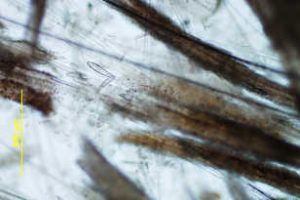FAQ
What Is a Board-Certified Veterinary Dermatologist?
A Board-Certified Veterinary Dermatologist is a veterinarian who has completed extensive medical and surgical training in diagnosing and treating diseases of the skin, ears, claws, and hair of animals. After finishing veterinary medical school and internship, veterinary dermatologists complete a rigorous three-year residency training program in dermatology, after which they take a board certification examination administered by the American College of Veterinary Dermatology.
A Board-Certified Veterinary Dermatologist can treat a wide range of conditions affecting the skin, ears, hair, and nails of animals, including but not limited to skin rashes and infections, ringworm, skin parasites, warts, skin cancer, allergy, ear diseases and ear tumors, skin pigment, and hair loss conditions. If your pet has a skin or ear-related problem, a Board-Certified Veterinary Dermatologist is the best choice for lasting, effective treatment.
Why Does My Pet Need a Board-Certified Dermatologist?
Skin and ear problems are the most common reason people seek veterinary care for their pets. Animals are susceptible to many types of skin disorders with very similar symptoms that may be complicated to diagnose and treat. Board-Certified Veterinary Dermatologists are trained to recognize the subtle differences between skin disorders that look all the same to the non-specialist veterinarian. Because of the specialty training and experience, the specialist is able to choose the least number of diagnostic procedures and can offer tailored treatment protocols for each individual. The specialist can make an accurate diagnosis that results in the determination of the correct underlying cause of the pet’s skin and ear conditions, which is essential for effective long-term management.
Why Do Animals Itch?
Skin problems are common in dogs and cats and are one of the most frequent reasons that owners bring their pets to the veterinarian. There are many different reasons why a pet will itch and scratch. Fortunately, we can break most of the causes down into a few categories: allergies, skin parasites, and skin infections.
Allergies
Signs of allergy need to be present before allergy testing is performed. Allergy is not easily recognized, as there are many conditions that can look like an allergy. Dermatologists are specially trained to recognize the subtle signs that distinguish allergy from other similar skin conditions in dogs and cats. Performing an allergy test on a non-allergic pet results in unnecessary costs to the pet owner. Furthermore, if the non-allergic pet is then treated for allergy, it will result in a failure to resolve the non-allergic skin condition coupled with the additional expense for these treatments. For this reason, if you or your veterinarian suspect that your pet has an allergic skin condition, he or she will often recommend that the pet is evaluated by a veterinary dermatologist to confirm this diagnosis. Clients who have gone to veterinary dermatologists often remark that they wish they had gone sooner because they would have found the answer sooner and spent less time and money to get a resolution to their pets’ skin conditions.
Animals with allergies should be allergy tested to identify the underlying cause of their allergy. Allergy testing can be performed with blood tests or skin tests (like scratch testing in people). Allergy blood testing is more convenient and can be performed by most veterinarians, but the blood test is less accurate compared to skin testing. Skin allergy prick testing is preferred because this test is performed on the actual organ that is involved in the allergy (the skin). Therefore it is more accurate than blood testing. Once the allergy test results are known, allergic pets can receive allergy shots (just like people) to desensitize them to the allergens (dusts, molds, danders, and plant pollens). Although not a cure or a quick-fix, allergy injections help 70–75% of allergic pets to have a decrease in symptoms and the need for other medications by treating the cause of the allergies, not just the symptoms.

Allergic Dog Before Treatment

Allergic Dog After Treatment
Food allergy
Animals with a food allergy can show very similar signs as pets with pollen allergies, but the itching is not seasonal. Food allergy can occur at any time in their life, even if they have been eating the same food all along. The symptoms of a food allergy usually do not improve much with anti-itch medications. Diagnosis and treatment is to feed the pet a diet using a protein source that they have never been exposed to before. Switching to another commercial diet usually does not help, because most of these diets have similar ingredients. A better alternative is a diet with single unique protein, such as fish, rabbit, duck, or venison, with a single carbohydrate, such as potato or rice. No other foods, treats, table scraps, rawhides, milk bones, or chewable supplements can be given for at least six to eight weeks. Some food allergic dogs require home-cooked hypoallergenic diets. Blood or skin testing for food allergy is unfortunately not accurate in dogs and cats. If the itchy symptoms have resolved in six to eight weeks, new food allergens can be added one at a time every two to three weeks. The top three most common allergens in dogs are beef, chicken, and soy. Less common food allergy signs are caused by milk, eggs, wheat, corn, or lamb. Interestingly, most clients come in telling us that they changed their pets’ food to one that contains no wheat or corn, when in fact, these are the least common causes of food allergy in the dog and cat.
Skin Parasites
Fleas cause itching and hair loss due to the irritation caused by their bites, secondary bacterial infections, or to a flea bite allergy. Symptoms are often worse in warm weather when fleas are most numerous. Animals will often itch and lose hair on their back near their tail. Cats may also develop small crusts on their skin that are similar in appearance to tiny millet seeds (miliary dermatitis). If the pet is allergic to the flea bite, then any flea infestations will cause severe reactions. Fleas are parasites that need the host blood to survive. Research into the flea biology has discovered that fleas bite their host animal 50 times per day. This means that only a few unseen fleas are capable of causing severe reactions in an allergic pet. With the availability of the effective veterinary prescription flea treatment products, flea allergy has become easier to treat. Flea control in the house and yard is also important. Treatment of secondary bacterial skin infections and temporary anti-itch medications are often needed while the flea problem is being brought under control.
Dog with Flea Bite Allergy Dermatitis

Mange Mites
There are two common types of mange (tiny, microscopic skin mites): Demodex and scabies. Another less common mite that can cause itchy skin disease is called Cheyletiella. All types of mites are diagnosed by a veterinarian using microscopic analysis of skin or hair samples.
Microscopic Exam of Hairs with Demodex Mites in Them

Demodex mites can cause patches of hair loss (especially on the face and feet/legs) with only mild itching, but occasionally dogs with Demodex mites can be very itchy, especially if secondary bacterial infections develop. This mite is more common in puppies but can occur in older dogs that are immunosuppressed by drugs or disease. This mite is not contagious to other pets or to people.
Demodex Mite Infection

Treatment options include weekly prescription antiparasitic dips or daily oral antiparasitic prescription medications. Skin scrapings are monitored monthly by the veterinarian to determine when it is safe to stop the medication, and most dogs are treated for an average of three to four months. All treatments should be prescribed and monitored by a veterinarian.
Scabies infection is very itchy and contagious to other dogs. This infection may cause hair loss and a crust will form on the pet’s ears, elbows, hocks, and chest.

Dog with Scabies Mites (Note the Ear Margins, Elbows, and Hocks)
Scabies mites can be difficult to find and often we will trial-treat for scabies based on the dog’s symptoms and appearance, even if we cannot find mites on the skin scrapes. Treatment options for scabies mange include weekly prescription insecticidal dips or systemic antiparasitic prescription medications given according to a veterinarian’s directions. With scabies, all dogs in the household must be treated at the same time, even if they are not showing signs, because some dogs can carry the mites and have no symptoms. Dogs with scabies may also have secondary bacterial or yeast skin infections, which contribute to the itch, and all treatments should be prescribed and monitored by a veterinarian.
Cheyletiella mites cause itchy skin and dry scaling on the back and can infect dogs, cats, people, and rabbits. They can also be difficult to find on skin scrapings, and so trial treatment for Cheyletiella is warranted if symptoms are consistent with infection. Treatment options are the same as for scabies mites, and all animals in the household have to be treated at the same time or they will pass the mites back and forth.
Infections
Although the main reason for a pet’s itchy skin may be allergies or parasites, they often get secondary bacterial or yeast infections, which can keep the itch going even if the allergy is treated. These infections can cause a rash; hotspots; red, crusty, flaky skin; hair loss; pimples; and bumps. Uncontrolled infections can cause the skin to look thickened, black and “elephant-like.”

Dog with Skin Infection Due to Bacteria
Diagnosis is made by the veterinarian with analysis of skin samples under the microscope. Skin infections should be treated with appropriate oral antibiotics or anti-yeast medications. Medicated shampoos and conditioners can also be helpful. Animals that have recurrent infections need to be screened for allergies or hormonal conditions and have the underlying cause identified and treated.
In summary, although there are numerous causes of itching in pets, your veterinarian can help your pet become a happier and more comfortable part of your family with appropriate diagnostics and treatments or by referral to a veterinary dermatologist.

Office Hours

